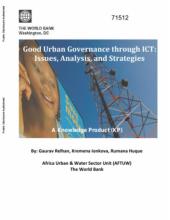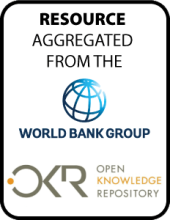Land Library
Welcome to the Land Portal Library. Explore our vast collection of open-access resources (over 74,000) including reports, journal articles, research papers, peer-reviewed publications, legal documents, videos and much more.
/ library resources
Showing items 1 through 9 of 158.The Arab Spring in the Middle East and North Africa (MENA) region has brought to the forefront key challenges: the need to create job opportunities, equal access, a level playing field, transparency and accountability, and a fair and competitive environment.
This publication is the result of an initiative to promote an exchange between Brazil and African countries on lessons learned about the role of community forestry as a strategic option to achieve the goals of Reducing Emissions from Deforestation and Forest Degradation (REDD+).
Africa is currently experiencing the world's fastest urbanization rate at 3.5 percent annually-placing increasing pressure on resource-constrained local governments to maintain and improve livability standards of their cities.
Mexico, Costa Rica, and Ecuador have substantial experience with implementing payments for ecosystem services (PES) and conservation incentive programs.
The purpose of this paper is to outline
an approach for Bank engagement in forests, trees, and
woodlands on farms in Sub-Saharan Africa for the coming five
years. The paper takes the framework of the Africa
Recent global initiatives on debt relief
and development assistance call for increasing aid for trade
to the poorest countries. The paper applies a multi-country
computable general equilibrium model to measure the
The report provides quantitative and qualitative insights into the performance of different non-permanence approaches for consideration of parties. This note summarizes the results of the analysis presented in the report.
Africa's growing demand for food has been met increasingly by imports from the global market. This, coupled with rising global food prices, brings ever-mounting food import bills. In addition, population growth and changing demand patterns will double demands over the next 10 years.
The Central America region is a small market. The region contains around 43 million inhabitants (0.6 percent of total world population) who generate around 0.25 percent of the world's Gross Domestic Product (GDP).








